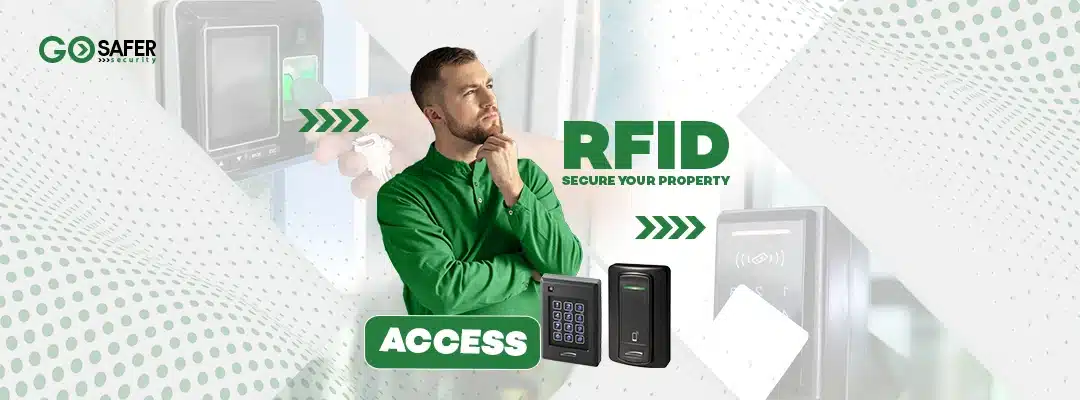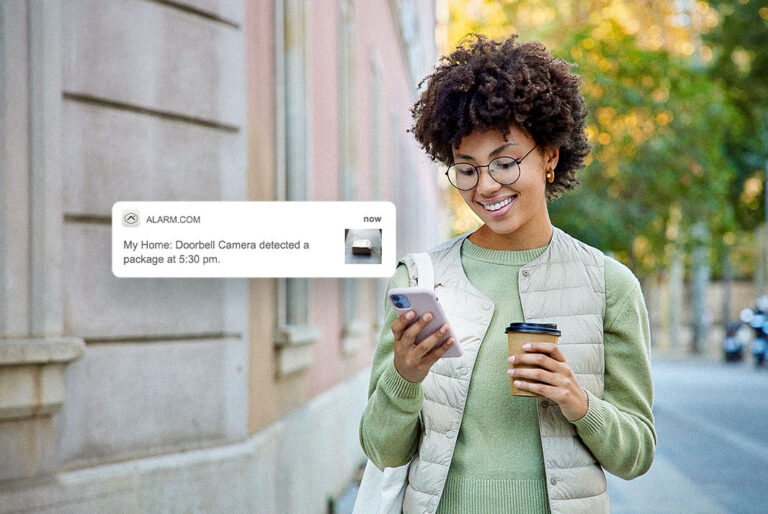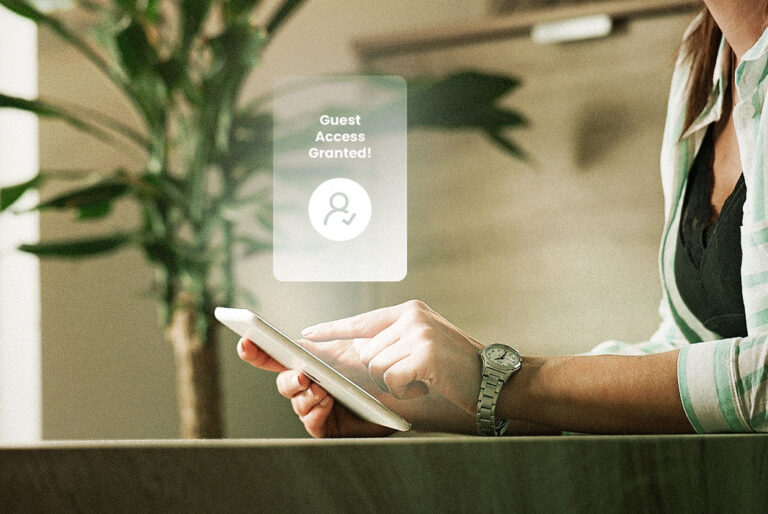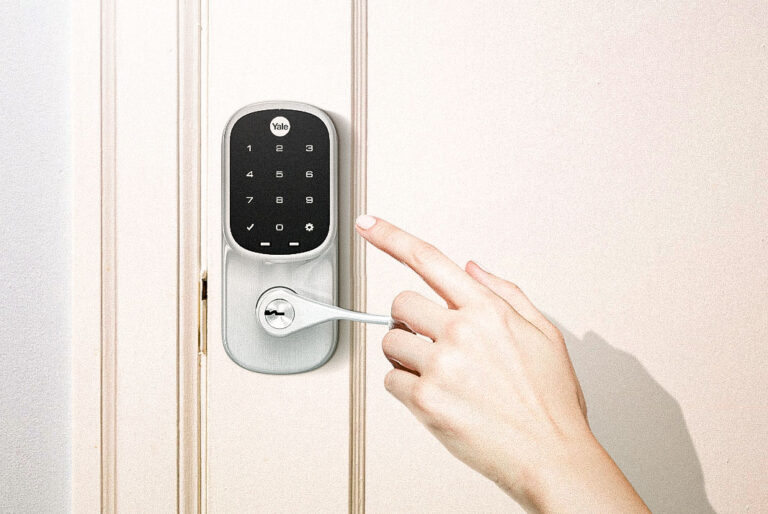The world of access control systems is rapidly changing with the advent of new proximity reader technology. This cutting-edge technology is revolutionizing how businesses, organizations, and individuals control and manage access to their physical spaces. With its ability to provide secure access, improved convenience, and greater flexibility, proximity reader technology is quickly becoming the go-to choice for modern access control systems.
In this article, we’ll explore how this powerful technology is transforming the way access control systems are used and how businesses, organizations, and individuals can benefit from it. By the end, you’ll have a better understanding of how proximity reader technology is revolutionizing access control systems and why it’s becoming the preferred choice for many. If you want to learn more on how to choose the right access control RFID system. read our guide here.
Table of Contents
ToggleWhat is A Proximity Reader Technology?
Proximity Readers are one of the most secure forms of access control available today. Different from keypads, proximity cards, or fobs, these devices allow only authorized users to access a facility. The devices use electromagnetic fields to read proximity cards or fobs securely, making them impossible to hack. Proximity readers are secure enough to meet many high-profile government security requirements.
A proximity reader is an electronic access control device that scans a possession (usually a card, fob, passport, or other devices found on passports) to identify the user. These readers can detect the readings of unique electromagnetic fields emitted by the card or fob. The readers then check this information against the information on the database. If a match occurs, the user can gain access. If there is no match, access is denied.
Proximity readers are also called prox, prox cards, proximity cards, proximity fobs, or proximity tags. Proximity reader technology is one of the most commonly-used forms of access control.
The Benefits of Using Proximity Card Readers in Access Control Systems
Prox card readers are a useful addition to any access control system. Proximity readers are used at entry and exit points of a building in order to confirm the identity of those entering the building and to ensure that those leaving are authorized to do so.
For employers who have multi-tenant spaces or businesses that allow customers to attend events or stay at their facilities, proximity card readers can be used to regulate the time, place, and manner of entry. These can be used to allow entry at certain times of the day, at certain locations, and during certain events. Businesses can also grant access to sensitive areas only to employees who are allowed to enter during certain days of the week, during specific hours, and over specific time periods.
For residential users, proximity card readers can be used to regulate access by family members. For instance, a parent may want to limit the time that their child spends in their house after school. The parent can set up a schedule that limits the amount of time that their child can stay in the house by a certain time in the evening. This removes the uncertainty of whether or not the child will be waiting at the door and gives them peace of mind.
To increase security measures in buildings and facilities, it is recommended to implement a multi-layered access control system incorporating proximity card readers alongside other security measures such as CCTV and alarm systems.
Maximizing the Reach of Proximity Card Readers in Access Control Systems
Proximity card readers are a useful addition to any access control system. Proximity readers are used at entry and exit points of a building in order to confirm the identity of those entering the building and to ensure that those leaving are authorized to do so.
For employers who have multi-tenant spaces or businesses that allow customers to attend events or stay at their facilities, proximity card readers can be used to regulate the time, place, and manner of entry. These can be used to allow entry at certain times of the day, at certain locations, and during certain events. Businesses can also grant access to sensitive areas only to employees who are allowed to enter during certain days of the week, during specific hours, and over specific time periods.
For residential users, proximity card readers can be used to regulate access by family members. For instance, a parent may want to limit the time that their child spends in their house after school. The parent can set up a schedule that limits the amount of time that their child can stay in the house by a certain time in the evening. This removes the uncertainty of whether or not the child will be waiting at the door and gives them peace of mind.
For those interested in DIY home security systems, check out our article on the best DIY home security systems available on the market today.
The Future of Access Control System: How Proximity Reader Technology is Evolving
Today’s access control systems use a variety of remote readers, keypads, key cards, and biometrics like finger scanners and facial recognition to open doors and grant access to secured facilities. It’s likely that today’s access control systems will continue to evolve, and new access control technologies are already making their debut. For example, proximity card reader technology is already in use, and it’s poised to become more sophisticated and ubiquitous in the future.
Proximity readers use radio frequency identification technology (RFID) to detect when a card, key, or other object is in close proximity to the reader. This technology is already being used in access control systems as an alternative to traditional key card and keypad entry systems. In the future, proximity readers may be used to grant access to more secure areas, such as banks, government buildings, and airports, as well as for personal security needs.
Additionally, proximity readers may be used to monitor employee attendance and access logs. As the technology continues to evolve, it is likely that proximity readers will become even more sophisticated, offering greater security and convenience.
How Proximity Card Readers Improve Employee Management in Access Control Systems
It’s not uncommon for office spaces to have several layers of security. On top of the door’s locking mechanism, many businesses have card access control systems, used to grant employees access to certain areas of the building. For the purpose of collecting employee timesheets, supervisors can also use proximity card readers, which could provide an additional layer of security against unauthorized access.
Proximity card readers are used for various purposes, including clocking in/out, giving employees access to secure areas, and purchasing company merchandise. Unlike regular proximity cards or key fobs, proximity card readers maintain a record of each employee’s attendance. While this might not be necessary if you’re keeping track of employee attendance by hand, using a proximity card reader helps keep track of when it’s necessary. If an employee tries to clock in, they swipe their card, and a proximity card reader verifies their identity by comparing their photo in the system to what’s on the card.
If an employee has not properly clocked out, an operator can verify their attendance via their proximity card. If an employee is late, the supervisor can take action by reviewing their attendance via the proximity card. This makes it more convenient than manually entering timesheets, especially if it’s time to clock out.
Proximity card readers also provide access control to secure areas, such as warehouses or offices. The reader will only allow someone with the right card to enter the area. This is much more secure than a standard lock and key since it’s more difficult to duplicate a card than it is to make a duplicate key.
Overall, proximity card readers are an effective way to track employee attendance and access control. They provide a secure, accurate, and convenient way to keep track of employee attendance and access control.
Conclusion
Proximity reader technology is revolutionizing access control systems in ways that were once thought impossible. The enhanced security, increased convenience, and greater flexibility that it provides are rapidly making proximity reader technology the go-to choice for modern access control systems. Today’s access control systems use a variety of remote readers, keypads, cards, and biometrics, and it’s likely that they will continue to evolve to embrace even more advanced technologies in the future.
At Go Safer Security, we have embraced these latest developments in access control technology to provide you with top-notch access control security solutions installation that fit your specific needs. We can help you harness the latest proximity reader technology to make your premises more secure and to give you greater control over who has access to sensitive areas within your premises. If you’re looking for a reliable and effective way to secure your business, make the smart choice by contacting Go Safer Security today and taking a step towards a more secure future.







